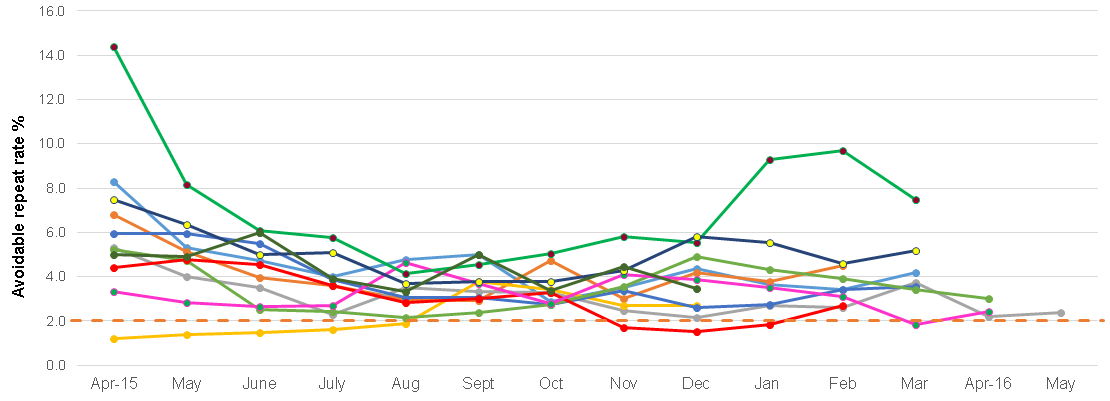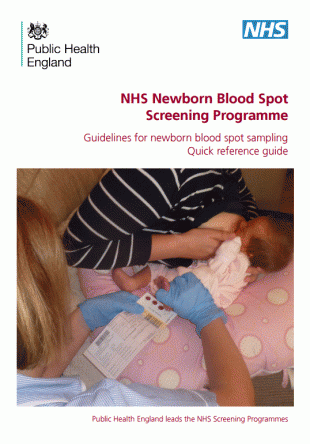It’s been over a year since blood spot screening labs in England began using the same new guidelines for assessing sample quality and we’d like to update everyone on progress.
Good quality blood spot samples are vital to ensure babies with rare but serious conditions are identified and treated early. They prevent the need for avoidable repeat samples, which can cause anxiety for parents, distress to babies, delays in the screening process and a waste of NHS money.
In April 2015, screening laboratories agreed stricter criteria for accepting samples with the aim of improving blood spot quality across England. Thanks to everyone’s hard work, monthly data shows that the repeat sample rate fell from initially high levels during 2015 to 2016 (see chart below).

However, there’s still some way to go to reach the acceptable standard (2%) nationally. Some areas are now achieving this while others have seen a rise again in recent months. Insufficient samples are still the biggest cause of avoidable repeats, followed by missing or incorrect data (for example NHS number, date of birth and date of sample).
We thought this would be a good time to share the data, thank everyone for their commitment to the project so far, and highlight best practices and resources that we hope will inspire further progress.
Best practice and resources
One lab has been in touch to let us know about the targeted training and lab visits they have been organising for midwives and health visitors. These have had great feedback and resulted in a significant drop in the number of insufficient samples received.
The most notable observation made by visitors to the laboratory is an improved appreciation of the sample requirements when they watched the punching process using the blood spot puncher and how a fair judgement of good/bad spots is made by the instrument and staff.
Newborn screening laboratory lead
You can watch a video of the ‘journey’ that samples take through the lab in our online learning module. The module also features a community midwife describing how she improved her sampling technique.
Tips on obtaining sufficient spots:
- wait for the blood to flow and completely fill each circle on the card with a single drop
- check that the blood has soaked through to the back of the filter paper
- don’t add multiple small drops of blood to fill the circle
- don’t apply blood to both sides of the card
Despite this success, the lab is still experiencing problems with samples that arrive with blood stains on the glassine envelope, indicating that they might have been compressed or not allowed to dry properly.

Make sure you:
- allow blood spots to air-dry away from direct sunlight or heat before placing in the glassine envelope. Taking the sample at the beginning of the visit will allow for a longer drying time
- don’t compress the sample with your thumb or heavy object once it’s in the envelope – it might result in a baby with a condition being missed

See the updated blood spot sampling guidelines for more tips on obtaining good quality blood spots first time (copies of the short guide can be ordered for free).
Since April 2015, more than 2,500 samples have been repeated due to missing or incorrect date of sample or date of birth. If you aren’t sure, check with the parents that the baby’s details are correct before adding the blood spots to the card.
You can also complete our interactive blood spot card to double check how to fill in the details accurately.
PHE Screening blogs
PHE Screening blogs provide up to date news from all NHS screening programmes – replacing our previously published newsletters.
You can register to receive updates direct to your inbox, so there’s no need to keep checking for new blogs.